Retro Replay Review
Gameplay
Cyclanoid’s core gameplay revolves around a deceptively simple but deeply engaging tile-cycling mechanic. Players are presented with a rectangular grid divided into several sections, each controlled by on-screen buttons that rotate the tiles within that section. The objective is to align each row so that all tiles match the icons displayed at the far left and right ends. This straightforward goal belies a wealth of strategic depth, as each cycle can affect multiple rows and set up or undermine your next move.
The game offers four distinct difficulty levels—Easy, Medium, Hard, and Crazy—each introducing larger boards, more complex section shapes, and an increased number of cycle buttons. In Easy mode, beginners can familiarize themselves with the fundamentals on a modest grid with only a handful of sections. As you progress to Crazy, however, you’ll need to master multi-step planning to untangle sprawling puzzles composed of dozens of tiles and interlocking cycles.
One of Cyclanoid’s strongest features is its built-in Puzzle Builder. This tool empowers players to design custom grids, choose section layouts, and set their own difficulty parameters. Whether you’re looking to recreate a favorite challenge or invent brand-new puzzles for friends, the builder is intuitive and surprisingly powerful. Completed creations can be saved and shared, extending the game’s lifespan far beyond its default modes.
Moreover, the variety of six board modes under each difficulty—altering board size, shape of cycle sections, and count of buttons—ensures the gameplay never feels repetitive. A small board might require quick, tactical adjustments, while a larger board demands a more methodical, puzzle-by-puzzle approach. Switching between these modes keeps the brain engaged and the experience fresh.
Graphics
Visually, Cyclanoid opts for clean, functional design over flashy flourishes. The tiles feature simple, high-contrast icons—perhaps circles, triangles, or stars—that are instantly recognizable even on busy screens. Borders and section outlines are drawn with crisp lines, making it easy to see which tiles will move when a given button is pressed. This minimalist aesthetic helps maintain focus on solving puzzles rather than getting distracted by unnecessary visual effects.
The user interface is sturdy and unobtrusive. Buttons are clearly labeled and positioned just outside the grid, indicating the direction of rotation at a glance. Color choices are neutral but pleasing, allowing players to spend extended sessions without eye strain. Animations for tile shifts are smooth and quick, delivering immediate feedback for each click without causing lag—even on older hardware.
While there’s no high-definition backdrop or cinematic flourish, that restraint is exactly what makes Cyclanoid’s graphics effective. Each icon stands out against the plain background, and the absence of clutter means players can zero in on their strategic choices. In puzzle games, clarity is paramount, and Cyclanoid nails it.
If you’re someone who enjoys thematic skins or elaborate animations, Cyclanoid won’t impress you on spectacle alone. But for puzzle enthusiasts who demand precision and readability, its graphical presentation is near-perfect, ensuring every move is clear and unambiguous.
Story
Cyclanoid doesn’t offer a traditional storyline or narrative arc; instead, it relies on pure puzzle mastery to drive player motivation. There are no cutscenes, characters, or plot twists. Instead, the satisfaction comes from overcoming steadily intensifying challenges and refining one’s spatial reasoning skills. In a genre where mechanics are king, Cyclanoid delivers a regal experience.
That said, there is a subtle “story” in the form of personal progression. Each difficulty level and mode feels like a new chapter in your journey from puzzle novice to grid-cycling guru. As you unlock and conquer harder boards, you experience a genuine sense of growth. The transition from Easy to Medium and onward provides a rhythm that feels like climbing through puzzle ranks rather than simply clicking through levels.
The absence of an elaborate backstory may disappoint players looking for narrative context or character development. However, for many, turning your brain into a well-oiled puzzle-solving machine is narrative enough. The real “plot” unfolds in your own mental breakthroughs, as you learn to anticipate tile movements several steps ahead.
Ultimately, Cyclanoid’s story is one of personal challenge and mastery. It’s about the evolving relationship between player and puzzle, where each session can produce small “aha” moments that propel you forward.
Overall Experience
Cyclanoid excels as a focused, no-frills puzzle game that places pure mental challenge at its center. Its shareware model allows prospective buyers to sample a generous slice of content before committing, making it an attractive proposition for casual players and puzzle aficionados alike. The four difficulty tiers and six modes per tier mean there are dozens of distinct setups to explore, while the Puzzle Builder expands possibilities nearly infinitely.
The game’s strengths lie in its clarity, depth, and customizable nature. While it lacks a traditional narrative or flashy graphics, those omissions actually reinforce the core experience—uninterrupted, strategic puzzle solving. Even if you’ve grown weary of match-3 clones or endless runners, Cyclanoid feels fresh and rewarding because it respects your time and your intellect.
In practical terms, you’ll find hours of gameplay in the default modes, and countless more in user-created puzzles. The quick-load interface and responsive controls make it easy to jump in for a five-minute brain teaser or settle down for a marathon session.
For anyone seeking a clean, challenging, and endlessly replayable puzzle game, Cyclanoid is a compelling choice. Its simplicity in presentation belies a formidable depth of strategy, and the inclusion of a custom puzzle builder cements its status as a timeless classic in the shareware puzzle space.
 Retro Replay Retro Replay gaming reviews, news, emulation, geek stuff and more!
Retro Replay Retro Replay gaming reviews, news, emulation, geek stuff and more!
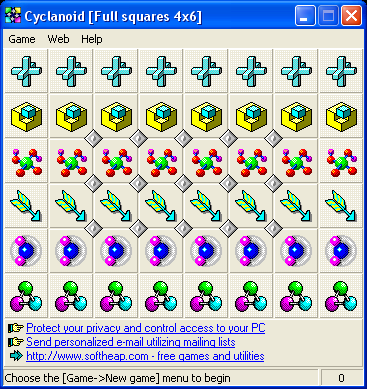
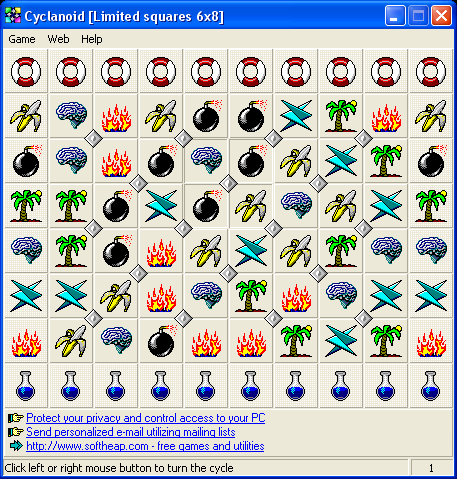
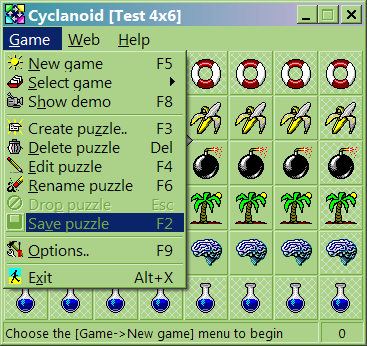
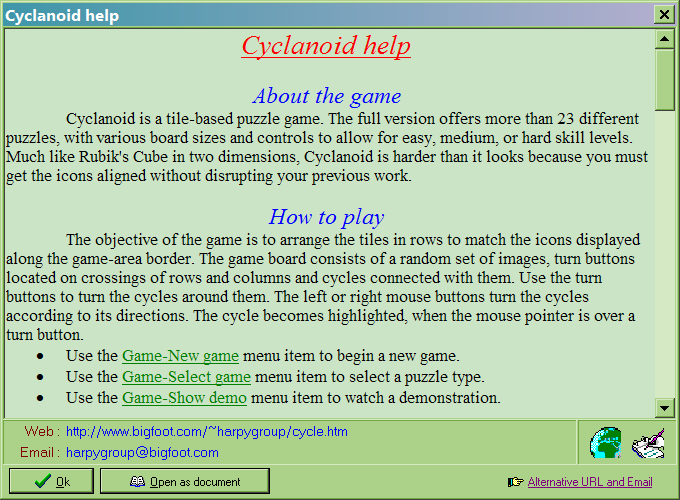
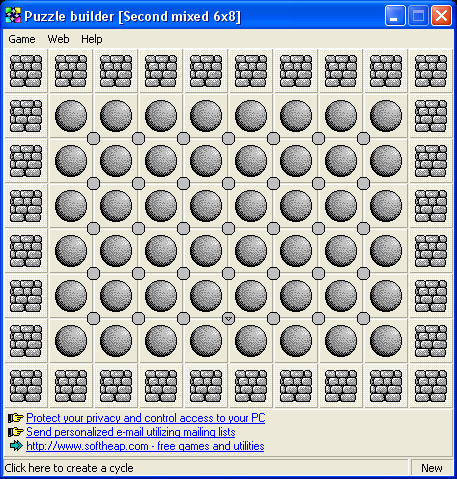



Reviews
There are no reviews yet.